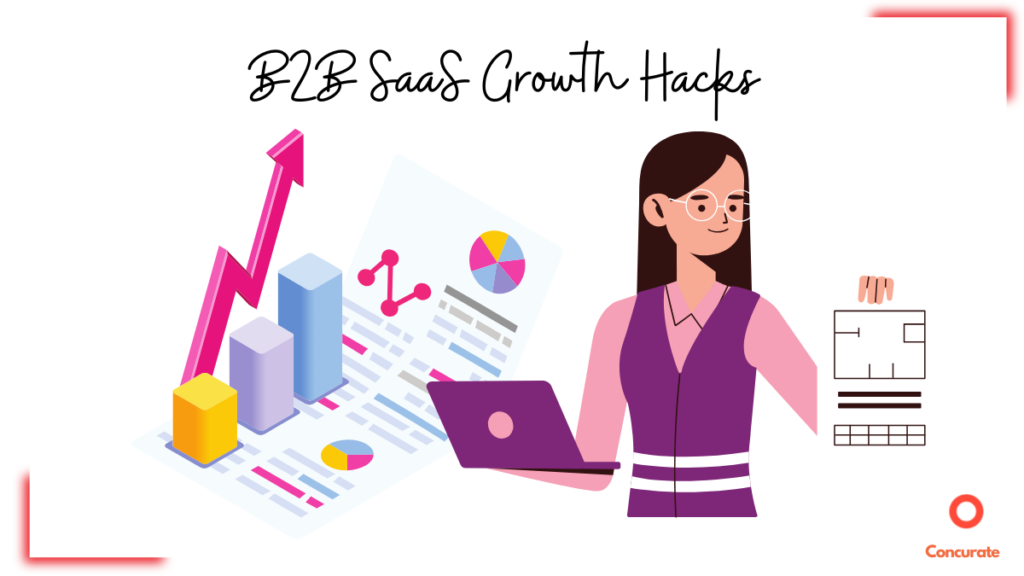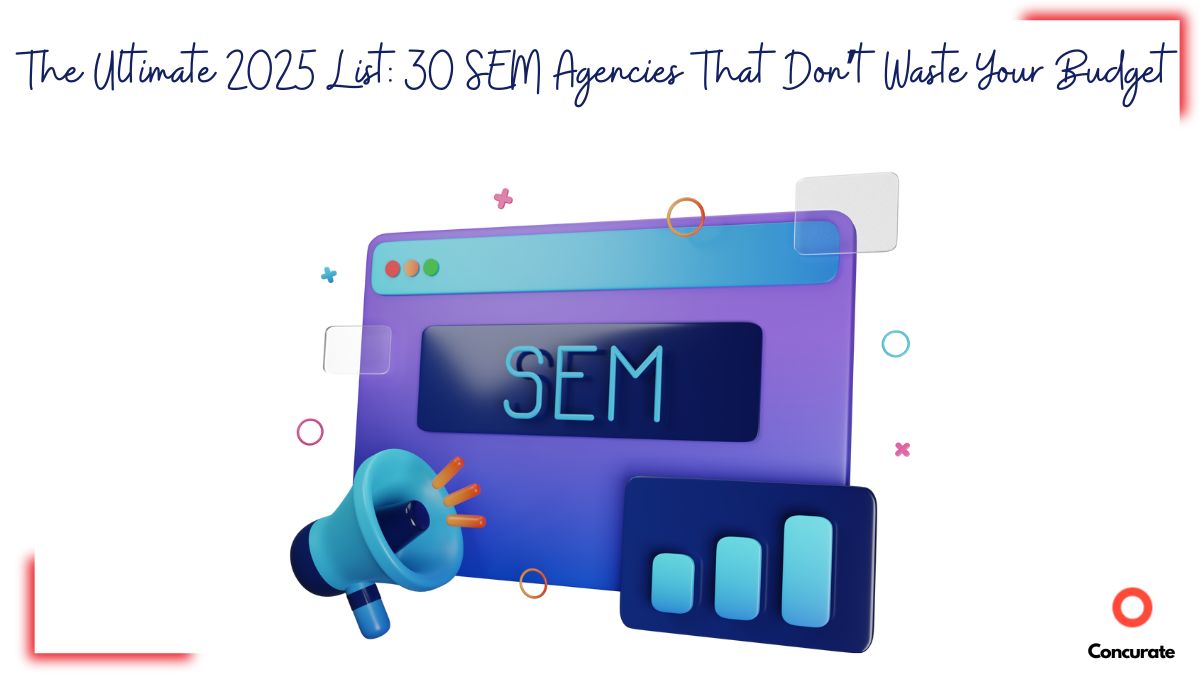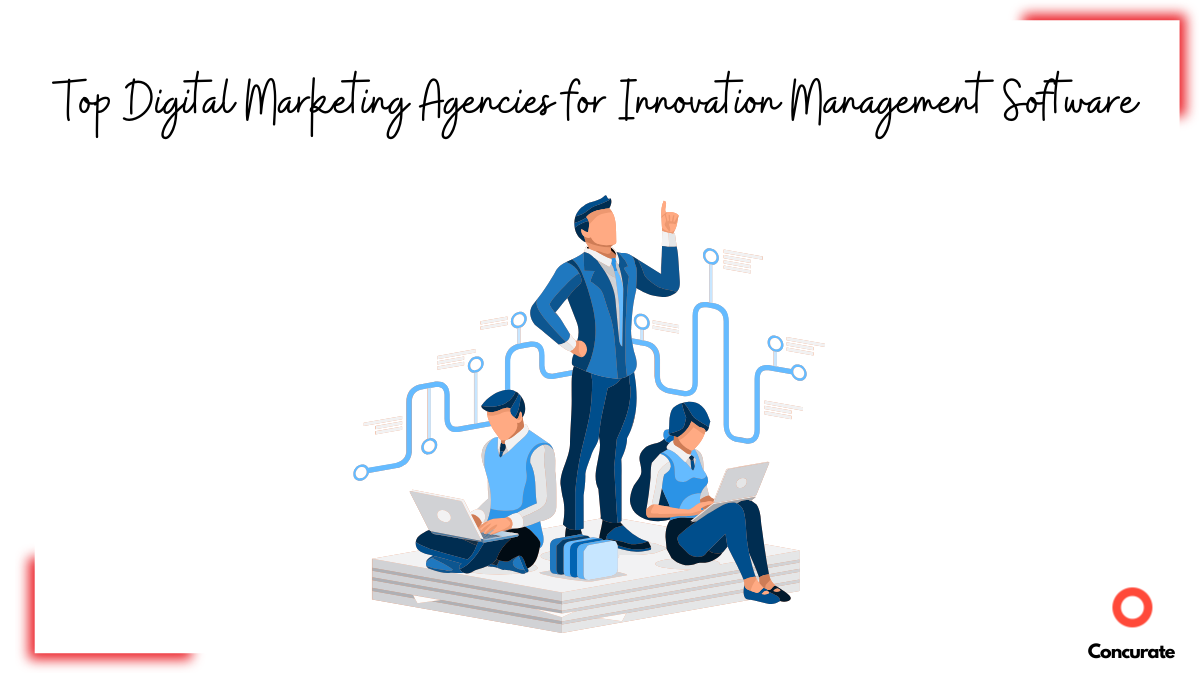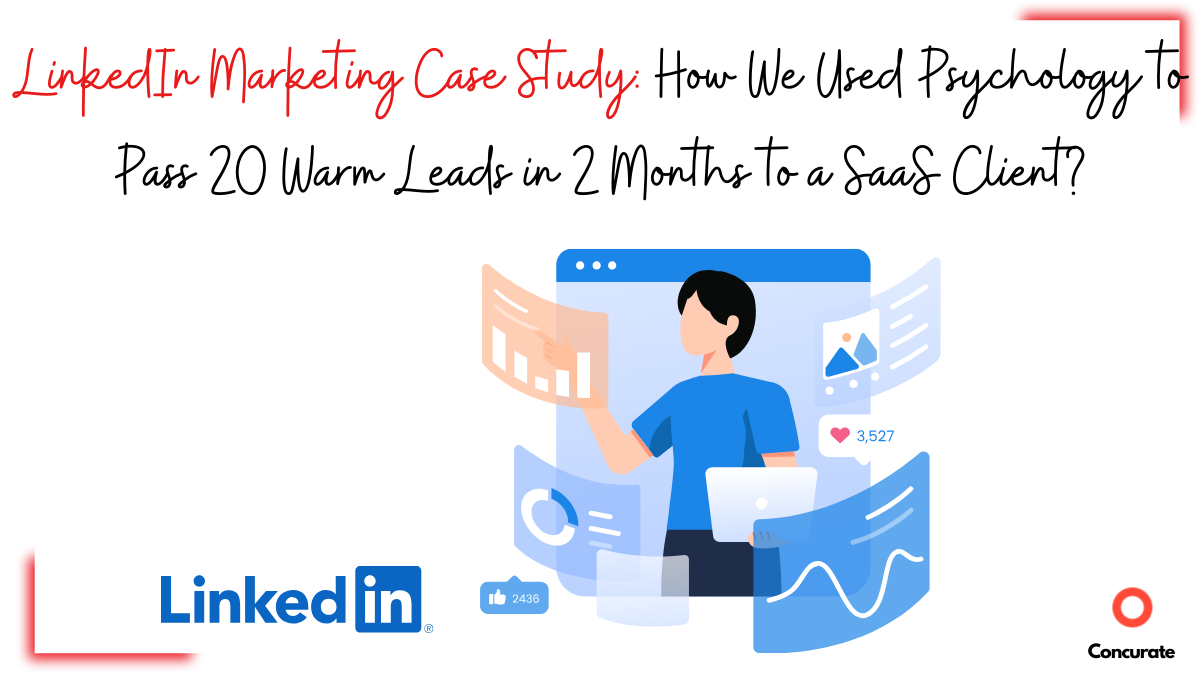B2B SaaS Growth Hacks to Scale Content that Brings Business, Not Just Website Traffic
| TL;DR: This article covers seven proven B2B SaaS growth hacks for 2025, including scalable competitor content, fixing SEO blind spots, programmatic SEO, user-generated content, glossary lead magnets, and SEO shortcuts. Learn practical strategies to boost leads, signups, and conversions for SaaS companies. |
SaaS marketers are flooding the internet with AI-generated content, hoping to game the system. The result? A sea of generic blogs that nobody reads.
But here’s the truth. Growth isn’t about churning out more content. It’s about creating the right content.
The smartest B2B SaaS companies aren’t chasing trends. They’re sticking to the fundamentals like SEO, content marketing, and buyer psychology, but executing them in ways their competitors aren’t.
This article breaks down seven B2B SaaS growth hacks that actually work. No fluff. No gimmicks. Just battle-tested strategies that drive real leads, signups, and conversions.
Let’s dive in.
7 B2B SaaS Growth Hacks for 2025 from Leading SaaS Companies
After years of breaking the ground in the B2B SaaS trenches, we’ve tried and tested endless tactics and done the heavy lifting for you. Drawing on our first-hand experience, we’ve curated the following list of seven B2B SaaS growth hacks that zero in on your challenges.
Think of this as your cheat code for actionable strategies that deliver real, measurable results.
- Put Effort into One Blog and Create 50+ (Attract Buyers, Not Just Visitors)
- Fix Your SEO Blind Spots
- Scale Smart with Programmatic SEO (But Don’t Forget the Human Touch!)
- Tap into User-Generated Content for Authority and Scale
- Leverage Glossary Pages as a Traffic & Lead Magnet
- Find SEO Shortcuts to Attract More (High-Buying-Intent) Leads
- Piggyback on a Competitor Brand

Let’s discuss each one by one.
1. Put Effort into One Blog and Create 50+ (Attract Buyers, Not Just Visitors)
Analyzing your competitors and understanding the factors that drive your target buyer’s decisions is a no-brainer. But did you know the same comprehensive insights can be your secret weapon for content creation?
By breaking down what your top competitors are doing, you can create blog posts that attract and convert high-intent buyers.
Here is what you need to do. Study 10 of your top competitors. Then, create 50+ blogs targeting high-buying-intent, such as:
- “[Competitor X] vs [Competitor Y]: Which is Better?”
- “Best Alternatives to [Competitor X]”
- “Why Companies Are Making the Leap from [Competitor X] to [Your SaaS]”
The image below shows that you can analyze 10 competitors and create 56 blog articles focused on competitor alternatives and comparison posts.

Use different permutations and combinations of competitor names to expand your content reach. AI-based tools and skilled writers can help you scale this process without sacrificing quality.
Why does this work?
These searches are made by decision-stage buyers (high-buying-intent prospects) looking for alternatives and comparisons before purchasing. Competitor-based content ranks well because it aligns perfectly with real search behavior. Check out how EngageBay targets high-intent keywords to generate 80K+ organic monthly visits.
We have seen 25 leads from just three such targeted blogs, but let’s keep that discussion for later.
2. Fix Your SEO Blind Spots
Sometimes, insignificant technical issues can quietly lower your SEO rankings. Broken links, slow loading times, and indexing errors can make search engines less likely to trust your site, which can lead to a frustrating user experience.
How to fix it?
- Run an SEO audit using tools like Ahrefs, SEMrush, or Screaming Frog to identify hidden technical issues.
- Check for broken links and fix or redirect them.
- Improve page speed by compressing images, optimizing code, and using a CDN.
- Ensure proper indexing by checking your robots.txt and sitemap.xml files.
Why does this work?
A faster, more optimized site comes in the good books of Google and drives better user experience and, in turn, conversion rates. Search engines reward well-maintained websites, resulting in better rankings with minimal new content efforts.
3. Scale Smart with Programmatic SEO (But Don’t Forget the Human Touch!)
When done right, programmatic SEO is a powerhouse. The secret? While you ensure each page has a human touch, let automation do the heavy lifting.
| 📌 What is programmatic SEO? 💡Programmatic SEO is a smart way to scale your website’s content using automation. Instead of manually writing hundreds of pages, you use data and templates to create SEO-optimized pages in bulk—each targeting specific keywords and search queries. |
How to do it?
- Identify scalable content opportunities: Think of location-specific landing pages, data-driven insights pages, and targeted comparison posts.
- Come up with a template for each page: When coming up with the template keep significant portions that can be unique for each page to avoid getting penalized by Google for duplicate content. For instance, the uniqueness can come from specific cities, cultures, addresses, maps, local entities, etc., for location-specific pages.
- Create content for each page at speed: Create the base draft using automation and leverage the expertise of skilled content writers to add unique elements.
- Add conversion-driven CTAs that are clear and bold.
Take inspiration from businesses like Atlassian, Zapier, and Canva, which have perfected programmatic SEO by fusing automation with carefully thought-out content strategy.
If you need a real-world example, check out how we helped a network training provider dominate in 60+ markets. The impact didn’t stop at rankings; it also led to high-value quote requests from decision-makers actively seeking specific training, as shown in the image below.

Why does this work?
Programmatic SEO allows you to quickly create hundreds of optimized pages, a perfect strategy for a B2B SaaS platform targeting multiple industries, locations, use cases, etc.
Want to see what this looks like in action? Read our SaaS SEO case study to see how we used this approach to rank #1 for a competitive keyword—without spending on ads.
4. Tap into User-Generated Content for Authority and Scale
Why create all your content from scratch when industry experts can help you? User-generated content (UGC) is one of the simplest and most effective ways to boost credibility and expand your reach.
How to do it?
- Tap into expert insights using platforms like ‘Featured’ to collect expert insights on key topics.
- Convert those insights into listicles or roundup articles.
- Tag contributors on LinkedIn and Twitter.
- Repurpose expert quotes into social posts, email newsletters, and even whitepapers.
Why does this work?
UGC boosts credibility by showcasing real industry voices. This makes your content more valuable, authoritative, and trustworthy. When industry experts see their insights featured, they will likely reshare your content with their audience, driving greater organic visibility and engagement.
If you enjoyed reading this post so far, consider subscribing to our weekly newsletter. We share first hand insights about content that brings business, not just website traffic whether from Google or AI tools like ChatGPT and Perplexity.
5. Leverage Glossary Pages as a Traffic & Lead Magnet
Glossary pages may not appear as the flashiest content strategy, but when created perfectly, they can be a powerful source of organic traffic, retention, and lead generation. Just look at Ahrefs. Their glossary alone attracts over 70,000 organic visitors every single month. Now, imagine applying this to your B2B SaaS niche!
How to do it?
- Create a structured glossary with dedicated pages for each term.
- Optimize every page with clear explanations, use cases, and best practices.
- Interlink glossary terms to keep visitors engaged and encourage further exploration.
- Strategically place CTAs. Ahrefs integrates its free tool prompts to capture leads.
- Leverage programmatic SEO to automate and efficiently scale your glossary content.
Why does this work?
Google loves structured, informative content. Hence, glossaries become a strong SEO gameplay. Users searching for industry jargon find clear explanations, not only increasing engagement and retention but also establishing the publisher as a dependable knowledge hub. A well-placed CTA turns passive readers into leads.
6. Find SEO Shortcuts to Attract More (High-Buying-Intent) Leads
Most marketers get told: “Study the buyer’s journey. Create helpful content. Show how your product solves their pain.”
Cool. That’s table stakes.
But great SaaS marketers ask a sharper question: “Where can I rank for a big group of keywords and show off my SaaS product, with a repeatable pattern to create content at scale?
That’s what Storylane nailed.
Their audience? SaaS marketers.
Their insight? These folks constantly Google stuff like “How to Create a View in Google Analytics?” or “How to animate text in Canva.”
So Storylane jumped the line. They created interactive “how-to” demos using Storylane—for tools their audience already uses.
It’s genius.
Because now, when their target audience Google a pain point, Storylane doesn’t just give you a solution. The SaaS marketers actually see StoryLane in action.
No pitch. Just value.
That’s smart content at scale.
Also, here is another such example from Capchase. Although Capchase is more of a Fintech product than a pure SaaS, it’s worth knowing about their smart content hack.
Capchase recognized that SaaS buyers often search for “[Tool] Pricing” just before making a purchase decision. So, they built a customer‑acquisition engine around it. They published over 200 posts—Qualtrics Pricing, DigitalOcean Pricing, PagerDuty Pricing”—each one breaking down list prices in detail.
These landing pages display a simple offer: “Want annual pricing but prefer to pay monthly? Capchase fronts the full amount to the vendor, so you pay us over time.”
With no gated PDFs or hard sells, this repeatable format transformed 200 posts into thousands of touchpoints, capturing prospects with high buying intent at the exact moment they’re ready to make a purchase.
7. Piggyback on a Competitor Brand
What if writing about a competitor brought you your best prospects?
That’s exactly what Clio’s marketing strategy achieves for its AI—turning competitor curiosity into qualified leads.
Clio did something most SaaS teams shy away from: they published an in-depth post on Harvey AI, a direct rival to Clio Duo AI.
That single article pulls in around 4,000 visitors out of 33,000 monthly searches for “Harvey AI” (Ahrefs).
Instead of pretending competitors don’t exist, Clio met their audience right where their intent was hottest—searchers already comparing legal AI tools.
While imparting information on features and benefits of Harvey AI, Clio introduces Clio Duo AI as a more accessible alternative for law firms already using Clio products.
The article nudges the readers to book a demo of Clio Duo AI a few times alongside free AI fundamentals course, legal AI trends report, etc. with an intent to capture email addresses of readers and nurture them to eventually become users.
Interesting right? Get more insights in one of our other blogs – Clio Marketing – What’s Their Secret Sauce.
If you prefer a quick walkthrough, we’ve also shared a short video version summarizing these 7 B2B SaaS growth hacks to scale content faster.
Want Content That Actually Brings in Customers? Let’s Talk.
Most B2B SaaS content is just white noise; it takes a lot of effort and has minimal impact. In today’s competitive market, your B2B SaaS requires the kind of content that gets qualified leads, boosts demo requests and signups, and turns free users into paying customers.
That’s what Concurate does best!
We help B2B SaaS companies stop spinning their wheels and start creating content that moves the needle. Whether through competitor-driven blogs or programmatic SEO, we help you capture high-quality traffic and turn it into revenue.
We don’t believe in the “post and pray” strategy. We give you content that brings in customers.
Ready to scale your B2B SaaS business? Book a call today, and let’s get started.
Frequently Asked Questions About B2B SaaS Growth Hacks
This section covers the most important questions about B2B SaaS growth hacks, including proven tactics for boosting organic traffic, signups, and conversions. Use these insights to put high-impact growth strategies into action for your SaaS business.
1. What Are the Most Effective B2B SaaS Growth Hacks for 2025?
The most effective B2B SaaS growth hacks include competitor-driven content, technical SEO improvements, programmatic SEO, user-generated content, glossary pages, and scalable SEO shortcuts focused on high-intent leads.
Want to accelerate your SaaS growth? Download our 30 Days 30 SaaS Growth Hacks handbook for actionable tips and strategies to take your content marketing to the next level!
2. How Can Programmatic SEO Accelerate SaaS Growth?
Programmatic SEO automates the creation of hundreds of targeted landing pages, increasing organic visibility for multiple keywords and locations, while still requiring human input for quality and uniqueness.
3. Why Are Glossary Pages Important for B2B SaaS Growth?
Glossary pages attract organic traffic by ranking for industry-specific terms. They establish authority, keep users engaged, and drive lead generation with strategic calls-to-action.
4. How Does User-Generated Content Boost SaaS Signups?
User-generated content leverages expert insights and customer testimonials, increasing trust and reach, which can directly lead to more signups and conversions for SaaS businesses.
5. How Does ChatGPT Choose Which SaaS Tools to Recommend?
Beyond traditional B2B SaaS growth hacks, it’s essential to understand how AI platforms like ChatGPT determine which SaaS tools to recommend. ChatGPT relies on third-party blogs, review platforms, Wikipedia, and official product sites—not just Google rankings.
For a comprehensive breakdown, see “Where Does ChatGPT Get Its Information From?“
6. How Can B2B SaaS Companies Optimize Their Website for AI Search Engines?
To maximize organic reach, B2B SaaS brands should prioritize making their websites discoverable and relevant to AI-driven search engines. This includes optimizing content for search engines, utilizing structured data, and maintaining a strong technical SEO strategy. For a practical, step-by-step guide, check out How to Optimize Website for AI Search Engines.
7. How to Cut Down the Sales Cycles for a B2B SaaS?
Sales cycles feel painfully long in B2B SaaS—but they don’t have to be.
Take David Skok’s legendary move: he slashed a 9-month cycle down to a single day by addressing every objection up front. That’s timeless advice.
Today, there are modern levers too. Embedded financing options like B2B BNPL can help speed decisions, especially for prospects hesitant about upfront costs.
Here is another nice one from a sales and marketing manager:
| 💡What do Experts Say Interactive Product Demos Cut Sales Cycles Dramatically“We stopped chasing every lead and doubled down on sales engineer-level demos for qualified prospects. Our CPQ software is highly visual and complex, so by letting prospects build real, working quotes for their own products during the call, we turned demos into decision points. Closing cycles shrank noticeably, and we gained more upsell opportunities because customers saw the full scope of what was possible—before they even signed.” Karee Furey-Hertenstein, Sales & Marketing Manager, RenaissanceTech |







